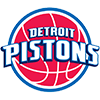This year's class of pass catchers has created the widest range of opinions I can remember in a long time. It's a group lauded for its depth and widely criticized for its lack of surefire stars.
Similar to the class of running backs coming out, there isn't a prototypical star setting the pace. No A.J. Greens or Calvin Johnsons. There's plenty of talent, but no blue chip prospects, at least not by traditional standards. You'll see concerns expressed over the size (Tavon Austin), polish (Cordarrelle Patterson) and speed (Keenan Allen) of some of these prospects, but I believe you'll see a handful of quality starters emerge from this draft. There just might not be too many Pro Bowlers.
The teams looking for wide receiver help in this draft are really going to have to assess what it is they want, who is the best schematic fit, and what is their risk tolerance. It's kind of like shopping for a new car, except there's no Mercedes or Bentleys on the lot. You need to figure out if it's best for you to buy a functional F-150 to do some heavy lifting, a reliable Accord to get you from A to B, or a CBR-1000 for pure excitement. Or maybe it's the '72 Mustang that may not run, but if you can get it going and clean it up a bit, it could be a quality whip.
I've provided comparisons to other NFL wide receivers, but
This year's class of pass catchers has created the widest range of opinions I can remember in a long time. It's a group lauded for its depth and widely criticized for its lack of surefire stars.
Similar to the class of running backs coming out, there isn't a prototypical star setting the pace. No A.J. Greens or Calvin Johnsons. There's plenty of talent, but no blue chip prospects, at least not by traditional standards. You'll see concerns expressed over the size (Tavon Austin), polish (Cordarrelle Patterson) and speed (Keenan Allen) of some of these prospects, but I believe you'll see a handful of quality starters emerge from this draft. There just might not be too many Pro Bowlers.
The teams looking for wide receiver help in this draft are really going to have to assess what it is they want, who is the best schematic fit, and what is their risk tolerance. It's kind of like shopping for a new car, except there's no Mercedes or Bentleys on the lot. You need to figure out if it's best for you to buy a functional F-150 to do some heavy lifting, a reliable Accord to get you from A to B, or a CBR-1000 for pure excitement. Or maybe it's the '72 Mustang that may not run, but if you can get it going and clean it up a bit, it could be a quality whip.
I've provided comparisons to other NFL wide receivers, but keep in mind these are parallels based on style, not necessarily talent level. There are also a couple impact tight end prospects that I chose to slip into the mix. It is considered a deep class there, but I only saw two guys as potential first-year impact starters so I decided to include them among the receivers.
1. Cordarelle Patterson, WR, Tennessee (6-2, 216)
4.42-second 40-yard dash
46 receptions, 778 receiving yards, 5 receiving touchdowns, 308 rush yards, 3 rush touchdowns, 1 kick return touchdown, 1 punt return touchdown in 2012
Patterson is the top traditional wideout on most pre-draft boards. He's a JUCO-transfer who only played one year at Tennessee, and his inexperience is compounded by reported concerns with his team interviews. It's understood he still has a lot to learn about the intricacies of the position, but if there's questionable character or work ethic too that could be cause for concern. The physical ability is unquestioned, though. He's a height-weight-speed guy with rare open-field running ability. He's dynamic with the ball in his hands and can score from anywhere. He was utilized on reverses, direct handoffs and as a returner at Tennessee, so he can make an impact even if he doesn't have polish as a receiver. He's elusive in the open field, has excellent cutback ability and vision, and has quick stop and start agility. He's a strong kid who will go over the middle and will be a big target on slants. Patterson will attack the ball in the air, but he's probably not the greatest deep threat in the class.
Pro Comparison: Taller, less powerful Percy Harvin
2. Tavon Austin, WR, West Virginia (5-8, 174)
4.34-second 40-yard dash
Career: 288 receptions, 3,413 receiving yards, 29 receiving touchdowns, 1,031 rush yards, 6 rush touchdowns, 4 kick return touchdowns, 1 punt return touchdown
Austin is very short and slight of frame and won't be playing on the outside much in the NFL, but his playmaking ability as a runner, returner and receiver is something to behold. This dude is silly quick, he has shifty feet, and makes lightning jump cuts. He has deep speed, nice cutback ability, and can turn on a dime. You worry about him taking a big hit, but it's awfully hard for defenders to even get their hands on him, and he was very durable at West Virginia despite taking on a huge workload. He'll excel on underneath targets and on option routes. He was utilized as a return man, on reverses, and as a running back out of the backfield at West Virginia. Austin has a chance to be a game-changer, but you'll have to be creative to find ways to get him the ball in space.
Pro Comparison: Steve Smith/Darren Sproles hybrid
3. Robert Woods, WR, USC (6-0, 201)
4.51-second 40-yard dash
Career: 250 receptions, 2,933 yards, 32 receiving touchdowns, 1 kick return touchdown
Woods is reliable. Steady. He's going to get you from A to B. He won't make the highlight reel too often. He's not especially fast and not especially tall, but you'll struggle to find actual weaknesses in his game. At one point he was considered a top-tier prospect, but he took a backseat to the impeccable Marqise Lee in 2012, and Woods' stock has cooled since. He's a precise route-runner who understands route concepts and intelligently sets up defenders with his movements. He has decent hands and can make the catch in traffic, but he's not great at high-pointing the ball and he lets it get into his body too often. With that said, Woods' well-rounded skill set makes him the sort of player who can thrive in a wide variety of situations, and his all-around athleticism seems above average.
Pro Comparison: Brandon Gibson
4. Keenan Allen, WR, California (6-2, 206)
4.71-second 40-yard dash (pro day)
159 receptions, 2,080 yards, 12 receiving touchdowns, 2 rush touchdowns, 1 punt return touchdown between 2011 and 2012
I originally had Allen as my No. 1 player in this ranking. Then it was reported that his drug test at the Combine was red-flagged due to abnormally high water levels, normally indicative of dilution attempts. I had to knock him down. This report naturally leads to calling his character into question, and he already had a PCL issue holding him back this spring despite suffering the injury way back in October. That injury contributed to his slow 40-yard dash time. Even when healthy he doesn't have blazing speed, but he plays faster than his 4.71-second 40 would lead you to believe. Allen has reliable hands and, despite possessing a big build, he has smooth movements in and out of his cuts and is a solid route-runner. He attacks the ball in the air and will be a target in the red zone. He will score in the NFL. All-in-all, Allen looks the part, from his build, to his hands, to his run-after-the-catch and leaping ability. But is he a character and health gamble?
Pro Comparison: Jordy Nelson
5. Markus Wheaton, WR, Oregon State (5-11, 189)
4.45-second 40-yard dash
91 receptions, 1,244 yards, 11 receiving touchdowns, 2 rush touchdowns in 2012
This is probably the first real shakeup on my list. I love this guy. He lacks the ideal size for an outside receiver, but he tracks the ball well in the air and is a great hands-catcher. He gets an excellent burst off the line of scrimmage, has very quick feet, and runs precise routes, which will help him gain separation at the next level. He's fast enough to get over the top, but he's a tough ballcarrier and will likely work most often in the intermediate area of the field on slants and hitches. Wheaton was also featured on reverses and screen plays at Oregon State and he's a versatile athlete who should be a starter in the league, best served as a No. 2 wide out.
NFL Comparison: Andre Roberts
6. Aaron Dobson, WR, Marshall (6-3, 210)
4.40-second 40-yard dash (Pro Day)
Career: 165 receptions, 2,398 rec yards, 24 rec touchdowns
Dobson is another curveball to the consensus ranks out there. He was unable to participate at the Combine after tweaking a hamstring and wasn't overly productive in college. But then again, the widely top-ranked Patterson had a total of 778 receiving yards at Division 1. Dobson is a projection pick. He has prototypical size to be an outside guy and he ran fast at his personal workout. He has good hands, a giant catch-radius, and a knack for making the spectacular play. He'll be a nice big target for quarterbacks and should be a red zone threat from Day 1. His lackluster stats at school came against questionable competition, which is a concern, but he also played with a questionable supporting cast. Still, other players (Tommy Shuler, Antavious Wilson) outproduced Dobson at times at Marshall. Dobson's physical gifts will have GMs dreaming on his upside, but he carries risk as well.
NFL Comparison: Roy Williams
7. Justin Hunter, WR, Tennessee (6-4, 196)
4.44-second 40-yard dash
73 receptions, 1,083 yards, 9 receiving touchdowns in 2012
Hunter could sneak into the first round. He's tall and very fast – two things you can't coach. Unfortunately, that's essentially what he is at this stage. He's a great target on fly patterns, fades, and jump balls. He can turn the corner and get up the field quickly, but he doesn't have much shake and is a straight-ahead runner. He needs to add strength and bulk to his frame as he could struggle to beat press coverage if he doesn't. He had some issues with drops last season and he'll have to improve his concentration. Hunter could have some medical concerns to answer to after suffering a torn ACL early in the 2011 season.
NFL Comparison: poor man's Randy Moss
8. Tyler Eifert, TE, Notre Dame (6-6, 251)
4.68-second 40-yard dash
113 receptions, 1,488 yards, 9 receiving touchdowns between 2011 and 2012
Eifert is everyone's top tight end and I'm no different in that regard. Most see him as a first-round difference-maker in the passing game, however, and that's where I disagree. He's a big target who can stretch the field down the seams and also split out wide. He'll catch the ball in traffic, has good hands, and will high-point the football. He'll be a reliable weapon in the passing game and a red zone target immediately. What I don't see from him is the big-play ability. He's not very fast and lacks lateral quickness, and he's not great at breaking tackles or making defenders miss. With the vast volume of tight end talents dotting the NFL these days, I see Eifert more as one of the crowd, not a standout. Even though he'll go in the first, I think he belongs in the second round.
NFL Comparison: Kyle Rudolph
9. Zach Ertz, TE, Stanford (6-5, 249)
4.76-second 40-yard dash
69 receptions, 898 yards, 6 receiving touchdowns in 2012
Ertz is generally considered to be close to Eifert by most, though Eifert is a better blocker and decisively more athletic. Ertz is a big target with good hands who displays excellent body control. He can also be split out or run the seam. He's very good at finding the soft spot in the defense. He's a bit slow in and out of his breaks and he's not very explosive in his first three steps off the line, however, and Ertz could prove to be a liability if called to block defensive linemen. Ertz will be a starter in the league and a useful asset in the passing game, but not a Pro-Bowl caliber impact player.
NFL Comparison: Zach Miller
10. Da'Rick Rogers, WR, Tennessee Tech (6-2, 217)
4.52-second 40-yard dash
67 receptions, 1,040 yards and nine receiving touchdowns for Tennessee in 2011
Rogers is a physical specimen with all the tools to be a very productive NFL receiver. The questions with him relate to character. He was dismissed from Tennessee for failing multiple drug tests and transferred to play at Tennessee Tech (FCS) this past year. He thrived at both stops, displaying great toughness and athleticism. He has a solid frame, is a good runner after the catch and is tough to tackle. He'll go over the middle and compete for the ball. He'll excel on slants and routes in the underneath-to-intermediate range. If he can get his stuff in order Rogers could end up being one of the better producers in this class, but he's a gamble that will probably slip late into the second or third round.
NFL Comparison: Miles Austin
11. DeAndre Hopkins, WR, Clemson (6-1, 214)
4.57-second 40-yard dash
82 receptions, 1,405 yards, 18 receiving touchdowns in 2012
Hopkins slides down this far because he lacks explosive qualities that leap out at you on film. With that said, he'll be a solid player and he's coming off a very productive season at Clemson. He has a quick release off the line of scrimmage and can run all the routes. He tracks the deep ball well in particular and he will attack the ball in the air, which can cover up some of his lack of top-end speed. He's a rugged runner with the ball in his hands and he displays good open-field vision, but not necessarily elite elusiveness. Hopkins will be a useful receiver who can be a red-zone target immediately, but his upside is somewhat limited by not being all that big or all that fast.
NFL Comparison: shorter Plaxico Burress
12. Stedman Bailey, WR, West Virginia (5-10, 193)
4.52-second 40-yard dash
186 receptions, 2,901 yards, 37 receiving touchdowns between 2011 and 2012
If you were going on production alone, Bailey would be the first receiver off the board. His 25 receiving touchdowns last year doubled that of more highly-touted teammate Tavon Austin. But the NFL is a different game played by a different athletic breed, and Bailey has trouble stacking up when it comes to measurables. He's a smaller guy and he doesn't have the blazing speed his West Virginia partner in crime possesses. What he can do is run great routes and catch the football. He displays a good understanding of defensive concepts and uses excellent body control to position himself to win at the point of the catch. He's especially effective tracking the deep ball, and Bailey plays with an aggression that's exceeded only by the likes of Steve Smith. He has quick feet and obviously has a nose for the end zone, but he doesn't have fantastic lateral quickness and jukes. Bailey will make some NFL team very happy because his cost will be modest and he'll be a sound contributor.
NFL Comparison: Golden Tate
Best of the Rest
Travis Kelce, TE, Cincinnati
Quinton Patton, WR, Louisiana Tech
Marquess Wilson, WR, Washington State
Tavarres King, WR, Georgia
Jordan Reed, TE, Florida
Chris Harper, WR, Kansas State
Josh Boyce, WR, TCU
Vance McDonald, TE, Rice
Marquise Goodwin, WR, Texas
Dion Sims, TE, Michigan State
Gavin Escobar, TE, San Diego State
Denard Robinson, RB/WR, Michigan
Nick Kasa, TE, Colorado
Kenny Stills, WR, Oklahoma
Chris Gragg, TE, Arkansas
Levine Toilolo, TE, Stanford
Chad Bumphis, WR, Mississippi State
Terrance Williams, WR, Baylor
Mark Harrison, WR, Rutgers
Ryan Swope, WR, Texas A&M


























